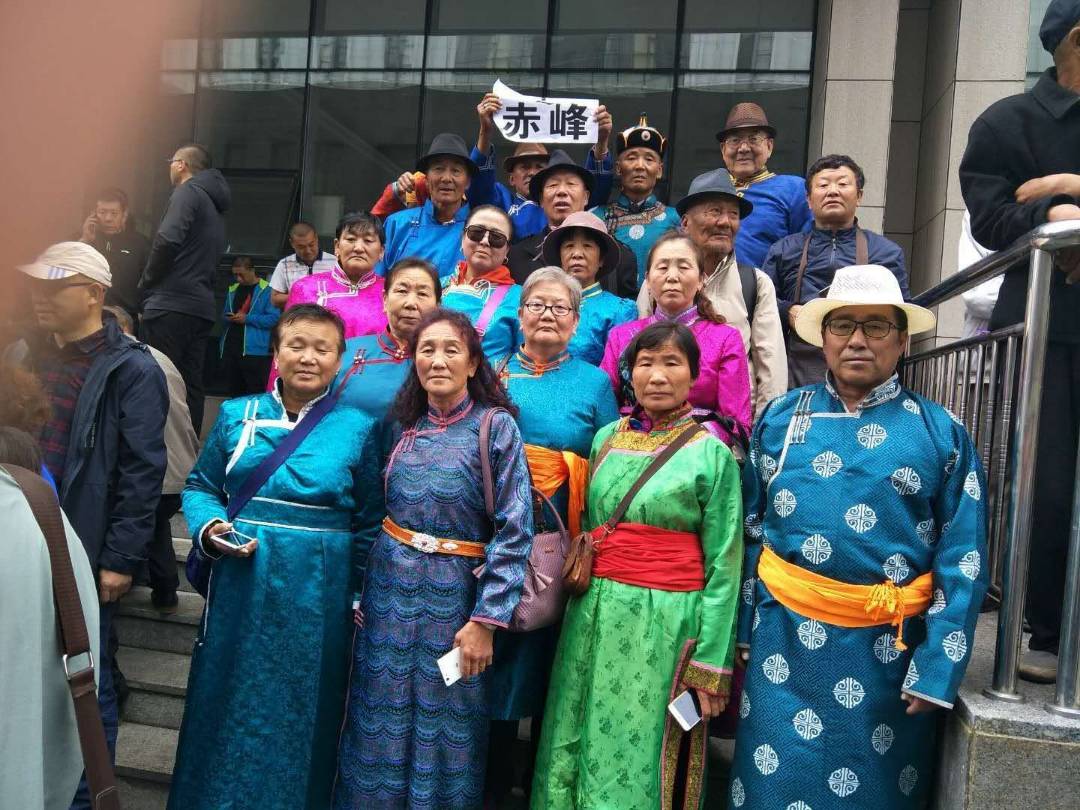More than 2,000 teachers from
all parts of Southern (Inner)
Mongolia — including leagues and
municipalities of Hulun-boir,
Hingaan, Tongliao (former Jirim),
Ulaanhad (former Zuun-ud),
Shiliin-gol, Ulaanchav, Hohhot,
Bogot, Bayannuur, Ordos and
Alshaa — took to the streets of
the regional capital Hohhot last
Monday. Gathering in front of
the Bureau of Letters and Visits
of the Autonomous Region
People’s Government, these
unemployed kindergarten,
elementary, and middle school
teachers protested the Chinese
government’s policy of
eliminating Mongolian schools
and laying off Mongolian
teachers and demanded an
immediate redress for their
grievances.
Holding a long banner reading
“strongly urge the government to
resolve the long neglected
problems of minban and daike
teachers,” the protesters, many
of whom wore traditional
Mongolian clothes, demanded
reemployment, compensation, and
a pension plan for unemployed
teachers.
The so-called “minban” (meaning
“people-managed”) and “daike”
(meaning “substitute teachers”)
are a Chinese style of
community-based private
education systems run by
non-governmental sectors in an
effort to offload the
government’s financial burden.
According to a research study
entitled “Minban Education in
China: Background and Current
Situation,“ published by the
Graduate School of Education at
Peking University, the total
number of students enrolled
under this form of private
educational system in Southern
Mongolia was 165,000 in 2002.
As the Chinese Government
started to adopt the policies of
ecological migration, livestock
grazing ban, and rapid
urbanization in 2000, Mongolian
schools in rural pastoralist
communities were either
eliminated or merged with
Chinese schools, forcing
thousands of minban and daike
teachers into unemployment
without adequate compensation.
“The elimination of minban
schools was achieved easily
through closing and merging
schools. However, the minban-teacher
elimination policies, including
differentiating minban teachers'
payroll, admitting a very small
proportion of them into the
public teacher force and
dismissing the majority, have
created a variety of problems in
rural basic education
expansion,” according to “Minban
Education: The Planned
Elimination of the
‘People-Managed’ Teachers in
Reforming China” by Chengzhi
Wang, published in the
International Journal of
Educational Development in
2002.
In an open letter to the
Autonomous Region Government,
the protesters stated that “all
level of governments failed to
implement relevant laws and
regulations to address minban
and daike teachers’ requests,”
and “local governments shirked
the responsibility for years.”
“We are helpless. We are in
despair. We are confused. We are
pained, and we are outraged,”
the letter said.






 Beyond
Great Walls: Environment, Identity, and Development on the Chinese
Grasslands of Inner Mongolia
Beyond
Great Walls: Environment, Identity, and Development on the Chinese
Grasslands of Inner Mongolia China's
Pastoral Region: Sheep and Wool, Minority Nationalities, Rangeland
Degradation and Sustainable Development
China's
Pastoral Region: Sheep and Wool, Minority Nationalities, Rangeland
Degradation and Sustainable Development The
Ordos Plateau of China: An Endangered Environment (Unu Studies on
Critical Environmental Regions)
The
Ordos Plateau of China: An Endangered Environment (Unu Studies on
Critical Environmental Regions)